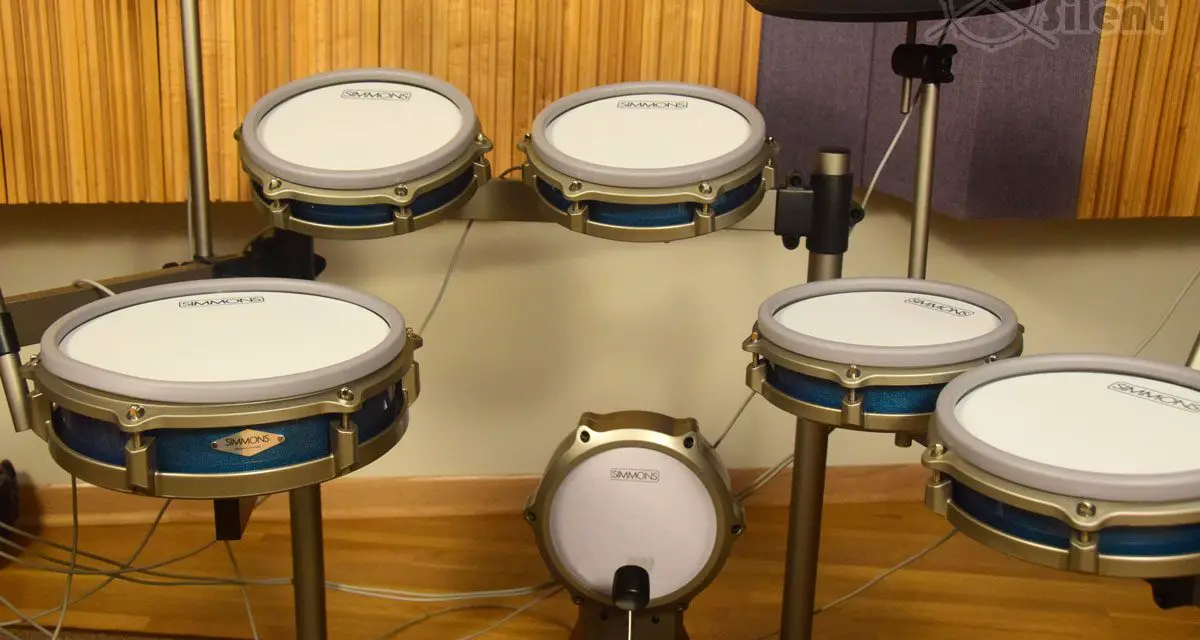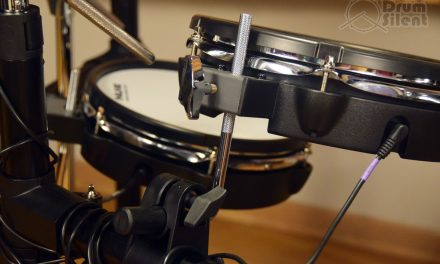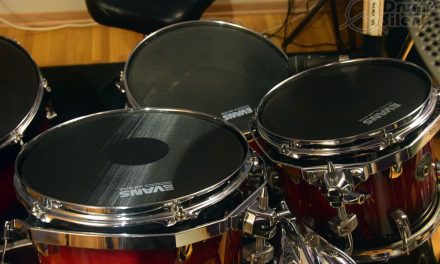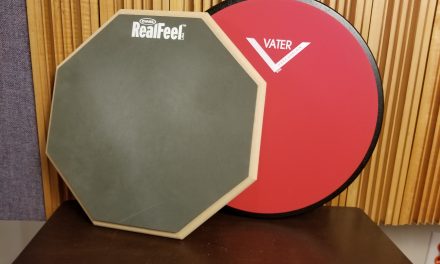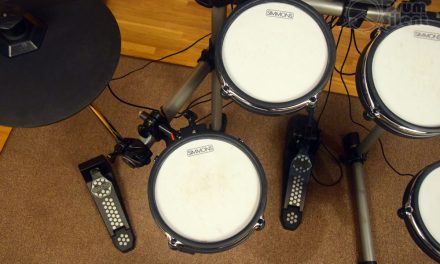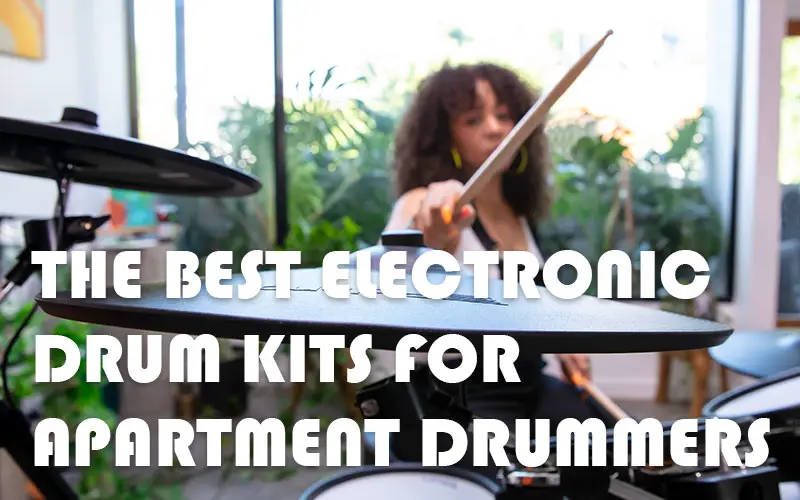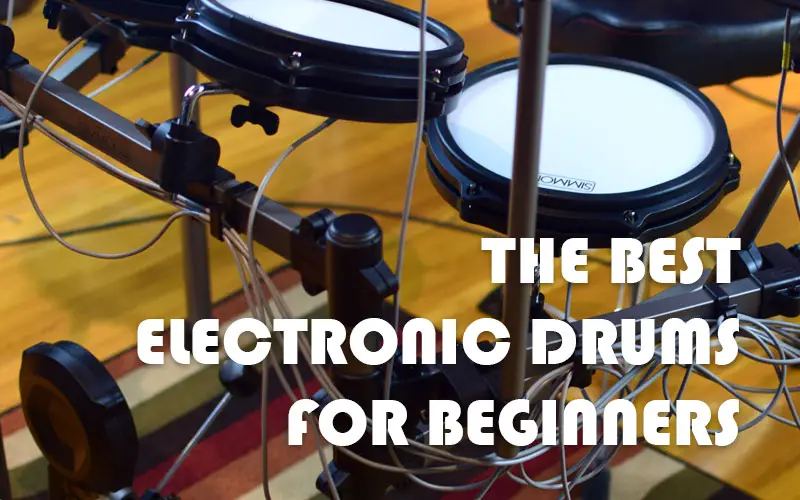Electronic drums certainly can feel similar to acoustic drums, but it depends on the kit. Some electronic drum kits are more convincing than others when it comes to simulating the feel of acoustic drums.
Mesh Drum Heads and Drum Pads
Mesh heads are commonly used on electronic drum kits to better simulate the look and feel of an acoustic drum. Mesh heads don’t feel exactly like mylar drum heads, but they can feel convincingly similar. Some drummers find that mesh heads can feel a little bouncy when compared to traditional mylar heads, which is my opinion as well. However, it’s not a huge difference and by taking some time to dial in the tension of a mesh head, most drummers will be able to find a feel that works for them.
When it comes to mesh drum heads, single ply mesh is common for low volume drum heads and double ply mesh is common for electronic drum kits. In terms of realistic feel, I think double ply mesh is a little more convincing than single ply mesh, but they both can play just fine.
Snare Pad Features
Not all drum pads can be played exactly like acoustic drums, and the limitations are more apparent on budget electronic kits. The snare pad is usually where you’ll find the most limitations.
On a budget electronic drum kit you might find that on the snare pad you can strike the head for one sound and strike the rim for another, and that’s about it. You might find that there’s no way to do proper cross-sticking or rim shots. Brush techniques are also usually not supported until you get into more advanced electronic kits, and even then it’s not that common. These types of limitations will make an electronic kit feel much less authentic if your playing style requires those techniques.
Cymbal Pads and Features
The cymbal pads are often an area where things can start to feel more unnatural pretty easily, especially with cheaper electronic drum kits. If you want to have cymbal pads that feel and play more like acoustic cymbals, you need to look at the more advanced kits with multi-zone cymbal pads and technologies in the sound module to help bring them to life.
When you think of playing acoustic cymbals, you can hit different parts of the cymbal in different ways to create different types of sounds. The ride cymbal is a good example. You can hit the edge to create more of a crash sound, you can hit the bow to get a nice ping, and you can also play the bell. To simulate this with an electronic drum kit, you’ll want to have a ride cymbal pad that can generate those different sounds by hitting the different zones. Triple-zone ride cymbal pads are the most common way of achieving this since they have edge, bow and bell zones to make the different types of sounds.
More advanced crash cymbal pads also will offer multiple zones, usually a bow and and edge zone to help simulate the different ways you can strike a crash cymbal.
Hi-hat pads can also feel less like acoustic hi-hat cymbals depending on the kit and the technology in the drum module. Most cheaper kits will be able to simulate the sounds of a fully open, half open and fully closed hi-hat. They might also be able to do foot taps but not foot splashes. Sometimes the pedal action can feel like it lags or doesn’t react the way you’d expect it to. A better hi-hat implementation on a more advanced kit will have better resolution between the open and closed sounds. It might also produce different sounds from the edge or bow depending on where you hit the pad. Some of the newer digital hi-hat pads can start to feel pretty realistic, but you need to have a more advanced drum module to get the most detailed sounds and playing experience from the hi-hat.
While multiple zones can help a cymbal pad feel more like an acoustic cymbal during play, there still is usually a lack of nuance when compared to the in-betweens and different ways you can create sounds with an acoustic cymbal. This can include such things as doing cymbal swells or playing on different areas of the edge and bow with different stick techniques.
Kick Drum Pads and Controllers
Kick drum implementation can vary wildly from budget to more advanced electronic drum kits. Like most other parts of the kit, more advanced electronic kits will often have a better feeling kick pad.
Beginner or extreme budget electronic drum kits might also use a kick pedal controller instead of a kick pad and kick pedal. These types of controllers look the same as the hi-hat controller pedals, and while they can work fine for basic kick drum playing, they come up short in terms of feeling like a kick pedal with a swinging beater.
Many kick drum pads on intermediate level kits feel like harder drum pads, but at least you can use a proper kick pedal with them, which makes a huge difference in feel when compared to the kick pedal controllers.
Some more advanced kits use kick drum pads that have more of a natural feeling drum head that moves and responds more like the head of an acoustic kick drum. These types of pads usually will give the most familiar type of experience when it comes to feeling like an acoustic drum.
The Drum Module and Drum Sounds
Now that we’ve touched on how all the pads can affect feel, we need to discuss the drum module as well. The drum module doesn’t have any effect on how the pads feel when you are physically playing them, but it can have an effect on how the pads feel based on how the sounds respond during play.
Drum modules can contribute to the feel of a kit by providing a dynamic and natural feeling sound experience that generates the types of sounds you’d expect to hear while playing an acoustic drum kit.
One good example of this is drum modules that use multi-sampled sounds for individual sounds around the drum kit. This means that each part around the kit has different samples that play back depending on how hard you’re playing the pad. For example, if you play ghost notes on the snare, the samples are actually taken from a snare played very quietly rather than just reducing the volume of a normal level drum strike. A multi sampled snare sound might include extremely light hits on the snare head all the way up to hard rim shots. This provides a more natural feeling experience when you’re playing the pads and listening to the drum module.
Conclusion
As you can see, there’s quite a few things that can contribute to how well an electronic drum kit can simulate the feel of an acoustic drum kit. As a general rule of thumb, more advanced kits are going to provide a more natural feeling experience, but it’s not always the case. Budget kits will almost always come up short in one or more ways when it comes to feeling similar to an acoustic kit. If you’re adamant about having an electronic kit that feels very similar to an acoustic in terms of playing experience, it can be worthwhile to look more at the acoustic design types of electronic kits. They tend to look and feel much more like acoustic drums but they can get expensive.

